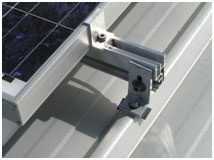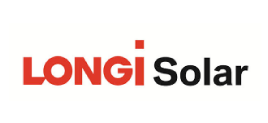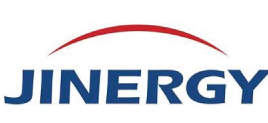For most households, solar is worth the cost. By installing solar you can expect to reduce your electricity bills by up to 80%. With these savings, a typical business or house will recoup the initial investment between 3 to 5 years.
One of the factors which influences how quickly you will recoup the investment is how much of the system’s power you’re able to use throughout the day.
Nearly every roof in Australia is suitable for solar panels, but there are certain conditions which can cause the panels to not work as well or can increase the installation cost. Here’s what you should check:
Roof Type
Every roof material is suitable for solar, except for slate. Because slate is so fragile, most installers aren’t willing to work on it.
Space
Each solar panel is typically 1.6m tall x 1m wide. A 5 kW system (the most commonly installed sized system) consists of 15 to 20 panels. This requires an approximate area of 25 to 35m2. If you don’t have this space available, you can install a smaller system instead.
Roof Slope
Panels are typically installed flush to your roof. But if your roof is flat or very steep, tilt frames may be necessary. This would incur additional costs.
Strength
Solar panels typically weigh 10 to 20 kg per square metre. Any roof in good condition can withstand this, but if you’re unsure, an installer will be able to assess your roof for you. If your roof needs any repairs, it’s important to get these done before installing solar panels.
Orientation
Panels facing north, west or east are suitable locations for solar panels. South-facing panels are generally not recommended in Australia.
Shade
Shade can significantly impact the amount of electricity produced by solar panels. Look for trees, chimneys, TV antennas or neighbouring buildings which can all cast shade on your roof. If you do have shade, think about how you can avoid it. For instance, see if it’s possible to place the panels on another part of the roof or remove the cause of the shading. Alternatively, solar panels which use micro inverters or DC optimiser technology are a good solution for roofs affected by shading. An installer can help you determine if shading affects your home.
Cyclone-prone area
Homes in cyclone prone areas need to ensure that a cyclone certified mounting system is installed in the case of a cyclone event.
One of the benefits of solar panels is that there isn’t much maintenance you need to do. Regardless, here are some good habits to get into to prolong the life of your system.
Cleaning
If your panels are tilted, rain actually cleans the panels for you. But, if there has been a long period without any rain, your panels are flat or there’s excessive dirt build up, it’s worth cleaning them. You can do this by hosing them down from the ground level or by hiring a solar panel cleaning company.
Inspection
It’s a good idea to get your panels checked every five years by a level 2 electrician. They’ll check to see if everything is working ok.
Monitoring
Because the whole process is automatic, it’s easy to forget the panels are actually there. This means that unless you monitor the panels proactively, any issues can go undetected. All systems will come with some form of monitoring that is important to set up. You can use this to check how much electricity is being produced at any given moment as well as the total amount produced in a day.
You can also pay extra to set up more advanced monitoring which shows you not only how much electricity the solar panels are producing, but also how much electricity you’re using. Some systems can also provide you with automatic alerts if anything goes wrong. This can be particularly useful, if you want to forget about the system and let the software do the monitoring for you.
Your solar installers should:
- Install your rooftop solar panels
- Run electric cables to your inverter
- Mount the inverter on your wall
- Connect the inverter to your smart meter
- Install isolation switches on the roof, next to your inverter, in your smart meter box
- Test the entire solar system
- Give you a demonstration of the system
- Ensure that you are satisfied with their work
- Ask you to sign the paperwork
No roofs will be harmed during a proper solar installation.
Certain roof types do have custom mounting procedures:
Tile Roofs
No roof tiles are broken during a solar installation. To support the panels, installers remove the tiles, install brackets to the rafters, and then re-install the tiles in their original state.

Metal Roofs
To ensure that your solar system is firmly mounted to the frame of your metal roof, your installer will remove existing screws and replace them with strong, stainless steel screws.
Metal roofs only require one roof penetration (to run the D.C. cable to your inverter) which is fully waterproofed.

Since your solar panels produce electricity during daylight hours, the simple way to maximize this free energy is to have as many appliances as possible run during daylight hours. Automatic and smart timers make this easy.
Many appliances such as dishwashers and washing machines come with a time delay function. This allows you to load the appliance in the morning, then set it to run during the day (when your solar panels are generating most electricity).
Heating and cooling cycles use up much of a household’s energy. Time your aircon and/or heater to run during peak daylight hours. Not only will you return to a comfortable pre-cooled or pre-heated home in the evening, but you also won’t need to buy so much power from the grid.
If you have a hot water heat pump(highly recommended, since it will help you save even more on electricity bills), set it to run during the day.
It’s very unlikely.
In order to pass Australian standards, solar panels must be able to withstand the direct impact of hail stones with a diameter of 35mm – roughly the size of a golf ball. But just in case, we do recommend adding your solar system to your home insurance.
If the grid fails, Australian law mandates that all grid-connected solar panel systems automatically shut off.
This mechanism prevents solar systems from feeding energy into a dead grid, and thus endangering electricians as they work on the line.
Your solar system will shut down the instant the blackout begins and reconnect the instant it ends, needing no action on your part.
Installation time frames vary depending on the location of your property and the size of the system. Generally, it takes around a day to install a 10kW system and around a week to install a 100kW system. Cosmic Renewable Energy arrange for pre-approval documents to be submitted before installation in addition to documentation to get your system connected to the grid after installation.
Cosmic Renewable Energy responds to any issues before, during and after installation promptly and courteously. We take full responsibility for our work, and do not hide behind warranties that are held by manufacturers. You bought the system from us and we will look after you long after the system has been installed.
OUR BRANDS















 WhatsApp us
WhatsApp us